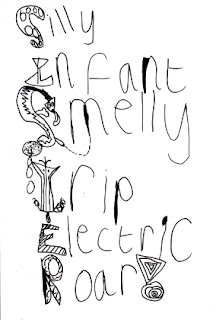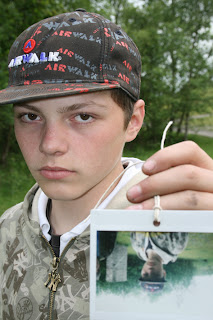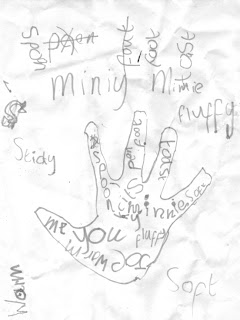Like many schools Joe's is closed today due to the snow. I'm planning to do some writing with him later, using paintbrushes and food colouring writing directly into the snow (the cold should focus the mind and body) poor thing, I'm sure he's just imagining making snow men and sledging... In the meantime, below is an interview I did with a wonderful Reception Teacher, Mrs Horne.
The problems can arise for boys when they realise (when sounding out the words using phonics) that there’s certain ways to spell, the rules. This can put them off writing, they don’t want to get it wrong or take risks. It hinders them when they can’t spell; it’s the perfectionist in them.
It’s not a new problem, for example my husband hates to put pen to paper- he reads difficult books, but won’t even write a Christmas card! Some boys can read, but not write, they don’t want to risk it and get it wrong.
In Reception we say if you want to write lying on the floor that’s ok. We have a collection of clipboards for them. One little boy who didn’t write, I invited him to climb a tree and write up there. He did and when he came down he wrote in the classroom as well! Last week when he climbed the tree, he asked if he could write up there! It’s about capturing their imagination.
Children at our school, have very good vocabulary, people are surprised when they still have problems with their writing. We try to find their own way of learning buts that’s very hard. Getting parents involved is great, as the children can’t have that one-to-one at school- not with class sizes as they are.
What helps? Writing wherever they want, lying on their tummy, sitting on the floor or kneeling down with clipboards. From very early on children are very aware of grown ups watching them and other children looking and comparing. They can easily loose their confidence. I encourage parents not to compare their children’s reading book stage with others, not to compete with other parents, not to get caught in that trap. It’s about building up the children’s self esteem, what THEY CAN DO, not what another child can do.
Writing on different surfaces and sizes of paper, really large writing on white boards, (you can always photograph/photocopy it and put it in their school books). This helped one boy I worked with, as he could rub it out quickly if he made a mistake. Alternatively you could try asking them to write using really tiny writing- see how small they can make their writing so it can still be read, using a magnifying glass if necessary. Small writing will also play to their secretive sides, just like writing under a table, they can hide away, and not feel self-conscious.
Mrs B Horne, Reception Teacher, Hayfield Primary School.


























































